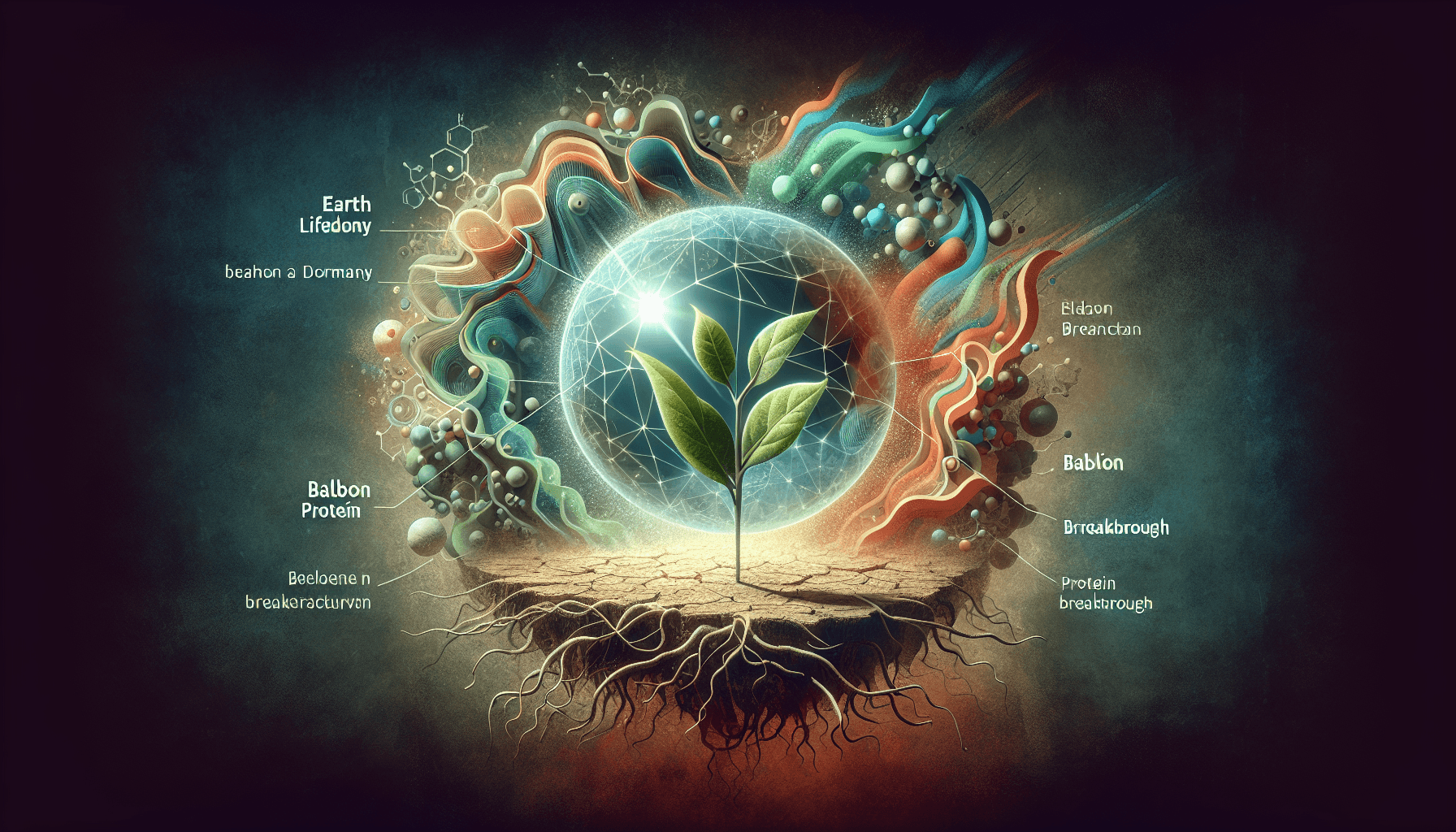When the going gets tough, many microbes go dormant. New research discovered a ubiquitous protein that shuts down a cell’s protein production in a flash.
 Introduction
Introduction
Researchers recently reported the discovery of a natural protein, named Balon, that can bring a cell’s production of new proteins to a screeching halt. Balon was found in bacteria that hibernate in Arctic permafrost, but it also seems to be made by many other organisms and may be an overlooked mechanism for dormancy throughout the tree of life.

Image: Dormant microbes in extreme weather conditions.
For most life forms, the ability to shut oneself off is a vital part of staying alive. Harsh conditions like lack of food or cold weather can appear out of nowhere. In these dire straits, rather than keel over and die, many organisms have mastered the art of dormancy. They slow down their activity and metabolism. Then, when better times roll back around, they reanimate. Sitting around in a dormant state is actually the norm for the majority of life on Earth: By some estimates, 60% of all microbial cells are hibernating at any given time. Even in organisms whose entire bodies do not go dormant, like most mammals, some cellular populations within them rest and wait for the best time to activate.
“We live on a dormant planet,” said Sergey Melnikov, an evolutionary molecular biologist at Newcastle University. “Life is mainly about being asleep.”
 How Dormancy Works
How Dormancy Works
But how do cells pull off this feat? Over the years, researchers have discovered a number of “hibernation factors,” proteins that cells use to induce and maintain a dormant state. When a cell detects some kind of adverse condition, like starvation or cold, it produces a suite of hibernation factors to shut its metabolism down. Some hibernation factors dismantle cellular machinery; others prevent genes from being expressed. The most important ones shut down the ribosome — the cell’s machine for building new proteins. Making proteins accounts for more than 50% of energy use in a growing bacterial cell.
Earlier this year, publishing in Nature, researchers reported the discovery of a new hibernation factor, which they named Balon. The protein is shockingly common: A search for its gene sequence uncovered its presence in 20% of all cataloged bacterial genomes. And it works in a way that molecular biologists had never seen before. Unlike other ribosome-disrupting hibernation factors that work passively, Balon proactively pulls the emergency brake, stuffing itself into every ribosome in the cell and even interrupting active ribosomes in the middle of their work.
“The Balon paper is amazingly detailed,” said the evolutionary biologist Jay Lennon, who studies microbial dormancy at Indiana University and was not involved in the new study. “It will add to our view of how dormancy works.”

 Practical Implications
Practical Implications
Melnikov and his graduate student Karla Helena-Bueno discovered Balon in Psychrobacter urativorans, a cold-adapted bacterium native to frozen soils and harvested from Arctic permafrost. They study P. urativorans and other unusual microbes to characterize the diversity of protein-building tools used across the spectrum of life and to understand how ribosomes can adapt to extreme environments.
Because dormancy can be triggered by a variety of conditions, including starvation and drought, the scientists pursue this research with a practical goal in mind: “We can probably use this knowledge in order to engineer organisms that can tolerate warmer climates and therefore withstand climate change,” Melnikov said.
 Edworking and the Benefits for SMEs and Startups
Edworking and the Benefits for SMEs and Startups
Edworking is the best and smartest decision for SMEs and startups to be more productive. Edworking is a FREE superapp of productivity that includes all you need for work powered by AI in the same superapp, connecting Task Management, Docs, Chat, Videocall, and File Management. Save money today by not paying for Slack, Trello, Dropbox, Zoom, and Notion.
 Introducing: Balon
Introducing: Balon
Helena-Bueno discovered Balon entirely by accident. She was trying to coax P. urativorans to grow happily in the lab but managed to cold-shock it. The cold-adapted bacteria went dormant. Helena-Bueno extracted the cold-shocked bacteria’s ribosomes and subjected them to cryo-EM, a technique for visualizing minuscule biological structures at high resolution. She saw a protein jammed into the stalled ribosome’s A site — the “door” where amino acids are delivered for the construction of new proteins. They named the new protein Balon for a different Spanish word for “ball.”
 Everybody Hibernates
Everybody Hibernates
Every cell needs the ability to go dormant and wait for its moment. Even in organisms like most mammals, whose entire bodies do not go completely dormant, individual cellular populations must wait for the best time to activate. Human oocytes lie dormant for decades waiting to be fertilized. Stem cells go quiescent, waiting for the body to call out to them to grow and differentiate.
“This is not something that’s unique to bacteria or archaea. Every organism in the tree of life has a way of achieving this strategy,” Lennon said.
“Before the invention of hibernation, the only way to live was to keep growing without interruptions,” Melnikov said. “Putting life on pause is a luxury,” and a survival strategy for global catastrophes. That’s why Helena-Bueno studies hibernation, interested in which species might remain stable despite climate change and which cellular processes, like Balon-assisted hibernation, might help.

 Conclusion
Conclusion
Melnikov and Helena-Bueno hope that the discovery of Balon and its ubiquity will help people reframe what is important in life. We all frequently go dormant, and many of us quite enjoy it. “We spend one-third of our life asleep, but we don’t talk about it at all,” Melnikov said. Maybe we can experience this process as something that connects us to all life on Earth, including microbes sleeping deep in the Arctic permafrost.
 Remember these 3 key ideas for your startup:
Remember these 3 key ideas for your startup:
- Embrace Adaptability: Just as microbes use Balon to survive stressful conditions, startups must be adaptable to changing markets and challenges. Being prepared to pivot can be crucial for survival.
- Resource Management: Balon's mechanism demonstrates the importance of conserving energy. Similarly, efficient use of resources and maintaining a lean operation can help startups thrive.
- Innovation from Mistakes: Helena-Bueno's accidental discovery of Balon reflects the potential of serendipitous innovations. Encourage a culture where mistakes are seen as opportunities for unexpected breakthroughs.
For more information on these revelations, you can check this research article on Nature.






